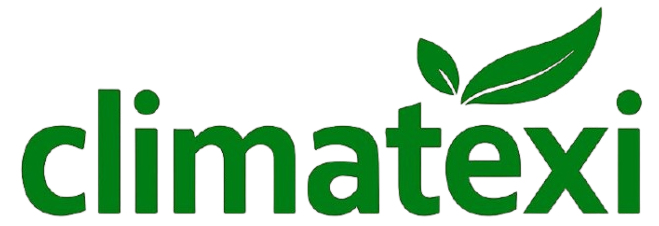0 Commentarii
·0 Distribuiri
·924 Views
·0 previzualizare
-
-
0 Commentarii ·0 Distribuiri ·882 Views ·0 previzualizare
-
0 Commentarii ·0 Distribuiri ·549 Views ·0 previzualizare
-
0 Commentarii ·0 Distribuiri ·2K Views ·0 previzualizare
-
Energy-Based Aesthetic Devices Market Analysis: Unlocking Growth Opportunities
The Energy-Based Aesthetic Devices Market has witnessed remarkable progress in recent years due to the rising demand for non-invasive cosmetic procedures. Advancements in laser, radiofrequency, and ultrasound technologies are driving adoption across dermatology and cosmetic surgery clinics. The increasing focus on skin rejuvenation, hair removal, and body contouring has fueled the market’s expansion, while a growing awareness of aesthetic procedures in emerging economies contributes to steady revenue growth. Regional adoption trends indicate that North America continues to lead, with APAC markets showing significant growth potential, creating opportunities for market players to expand their regional footprint. For an in-depth understanding, check the Energy-Based Aesthetic Devices Market analysis.
Get full Reports :https://www.marketresearchfuture.com/reports/energy-based-aesthetic-devices-market-32726
The market is highly competitive, with key companies investing in R&D to develop innovative solutions. Customized treatments and portable aesthetic devices are shaping product offerings, while regulatory approvals and safety standards remain critical factors influencing market penetration. Furthermore, strategic collaborations between manufacturers and healthcare providers are enhancing distribution channels, enabling seamless access to advanced devices. With technological advancements and evolving patient preferences, the Energy-Based Aesthetic Devices Market is poised for continued growth, reflecting strong investment potential and promising returns for stakeholders.
FAQs
Q1: What drives the growth of the Energy-Based Aesthetic Devices Market?
A1: Increasing demand for non-invasive cosmetic procedures, technological advancements, and rising aesthetic awareness are key drivers.
Q2: Which region leads the Energy-Based Aesthetic Devices Market?
A2: North America leads the market, while APAC shows promising growth due to emerging healthcare infrastructure.Energy-Based Aesthetic Devices Market Analysis: Unlocking Growth Opportunities The Energy-Based Aesthetic Devices Market has witnessed remarkable progress in recent years due to the rising demand for non-invasive cosmetic procedures. Advancements in laser, radiofrequency, and ultrasound technologies are driving adoption across dermatology and cosmetic surgery clinics. The increasing focus on skin rejuvenation, hair removal, and body contouring has fueled the market’s expansion, while a growing awareness of aesthetic procedures in emerging economies contributes to steady revenue growth. Regional adoption trends indicate that North America continues to lead, with APAC markets showing significant growth potential, creating opportunities for market players to expand their regional footprint. For an in-depth understanding, check the Energy-Based Aesthetic Devices Market analysis. Get full Reports :https://www.marketresearchfuture.com/reports/energy-based-aesthetic-devices-market-32726 The market is highly competitive, with key companies investing in R&D to develop innovative solutions. Customized treatments and portable aesthetic devices are shaping product offerings, while regulatory approvals and safety standards remain critical factors influencing market penetration. Furthermore, strategic collaborations between manufacturers and healthcare providers are enhancing distribution channels, enabling seamless access to advanced devices. With technological advancements and evolving patient preferences, the Energy-Based Aesthetic Devices Market is poised for continued growth, reflecting strong investment potential and promising returns for stakeholders. FAQs Q1: What drives the growth of the Energy-Based Aesthetic Devices Market? A1: Increasing demand for non-invasive cosmetic procedures, technological advancements, and rising aesthetic awareness are key drivers. Q2: Which region leads the Energy-Based Aesthetic Devices Market? A2: North America leads the market, while APAC shows promising growth due to emerging healthcare infrastructure.0 Commentarii ·0 Distribuiri ·527 Views ·0 previzualizare -
Medical Scheduling Software Market Analysis: Driving Efficiency in Healthcare Operations
The Medical Scheduling Software Market analysis reveals a transformative shift in healthcare operations as facilities increasingly adopt digital solutions to streamline appointment management, optimize staff allocation, and enhance patient engagement. Modern scheduling software integrates features such as automated reminders, telehealth integration, and predictive analytics to reduce administrative bottlenecks and improve operational efficiency. Hospitals and clinics are recognizing that these solutions not only save time but also reduce human error, enabling a more seamless patient experience. Moreover, the growing emphasis on patient-centric care models is accelerating the adoption of these systems, as they offer the flexibility to manage complex scheduling scenarios across multiple departments. The integration of cloud-based platforms ensures accessibility, real-time updates, and robust data security, which are critical in today’s digital healthcare environment. Companies investing in advanced solutions that leverage AI and machine learning are positioned to gain a competitive edge in the market.
Furthermore, the Medical Scheduling Software Market analysis highlights the impact of regulatory compliance and interoperability standards on software adoption. Healthcare providers are increasingly focused on solutions that can seamlessly integrate with electronic health records (EHRs), billing systems, and patient portals. This interconnectedness not only enhances workflow efficiency but also provides actionable insights through data analytics, enabling better resource management and strategic decision-making. As telemedicine continues to expand, software providers are offering features that support virtual appointments, multi-location scheduling, and automated patient notifications. The market is witnessing a surge in demand from both large hospital networks and small-to-medium-sized practices, reflecting the universal need for optimized scheduling solutions. Key players are innovating with AI-driven predictive scheduling, advanced reporting tools, and mobile-friendly interfaces to meet the diverse needs of healthcare organizations globally. This trend underscores the significance of adopting intelligent scheduling systems as an integral part of modern healthcare infrastructure.
Get Full Reports
https://www.marketresearchfuture.com/reports/medical-scheduling-software-market-33115
FAQs:
Q1: What factors are driving growth in the Medical Scheduling Software Market?
A1: The growth is driven by increasing demand for automated scheduling, telehealth integration, improved patient experience, and AI-based predictive analytics in healthcare facilities.
Q2: How does Medical Scheduling Software improve healthcare operations?
A2: It streamlines appointment management, reduces administrative errors, optimizes staff allocation, and integrates with EHRs and billing systems for efficiency.
Q3: Which healthcare providers are adopting Medical Scheduling Software?
A3: Adoption spans large hospitals, clinic networks, and small-to-medium practices seeking efficient scheduling, reduced operational costs, and better patient engagement.Medical Scheduling Software Market Analysis: Driving Efficiency in Healthcare Operations The Medical Scheduling Software Market analysis reveals a transformative shift in healthcare operations as facilities increasingly adopt digital solutions to streamline appointment management, optimize staff allocation, and enhance patient engagement. Modern scheduling software integrates features such as automated reminders, telehealth integration, and predictive analytics to reduce administrative bottlenecks and improve operational efficiency. Hospitals and clinics are recognizing that these solutions not only save time but also reduce human error, enabling a more seamless patient experience. Moreover, the growing emphasis on patient-centric care models is accelerating the adoption of these systems, as they offer the flexibility to manage complex scheduling scenarios across multiple departments. The integration of cloud-based platforms ensures accessibility, real-time updates, and robust data security, which are critical in today’s digital healthcare environment. Companies investing in advanced solutions that leverage AI and machine learning are positioned to gain a competitive edge in the market. Furthermore, the Medical Scheduling Software Market analysis highlights the impact of regulatory compliance and interoperability standards on software adoption. Healthcare providers are increasingly focused on solutions that can seamlessly integrate with electronic health records (EHRs), billing systems, and patient portals. This interconnectedness not only enhances workflow efficiency but also provides actionable insights through data analytics, enabling better resource management and strategic decision-making. As telemedicine continues to expand, software providers are offering features that support virtual appointments, multi-location scheduling, and automated patient notifications. The market is witnessing a surge in demand from both large hospital networks and small-to-medium-sized practices, reflecting the universal need for optimized scheduling solutions. Key players are innovating with AI-driven predictive scheduling, advanced reporting tools, and mobile-friendly interfaces to meet the diverse needs of healthcare organizations globally. This trend underscores the significance of adopting intelligent scheduling systems as an integral part of modern healthcare infrastructure. Get Full Reports https://www.marketresearchfuture.com/reports/medical-scheduling-software-market-33115 FAQs: Q1: What factors are driving growth in the Medical Scheduling Software Market? A1: The growth is driven by increasing demand for automated scheduling, telehealth integration, improved patient experience, and AI-based predictive analytics in healthcare facilities. Q2: How does Medical Scheduling Software improve healthcare operations? A2: It streamlines appointment management, reduces administrative errors, optimizes staff allocation, and integrates with EHRs and billing systems for efficiency. Q3: Which healthcare providers are adopting Medical Scheduling Software? A3: Adoption spans large hospitals, clinic networks, and small-to-medium practices seeking efficient scheduling, reduced operational costs, and better patient engagement.0 Commentarii ·0 Distribuiri ·539 Views ·0 previzualizare -
Medical Weight Loss Clinic Market Research – Insights and Analysis
The Medical Weight Loss Clinic Market research indicates a strong focus on patient-centric programs that combine clinical expertise, lifestyle management, and technological interventions. Clinics offering comprehensive solutions that include dietary counseling, pharmacotherapy, and minimally invasive procedures are witnessing higher adoption rates. The Medical Weight Loss Clinic Market research provides detailed insights into competitive strategies, market share analysis, and emerging opportunities across regions. Personalized treatment plans and data-driven approaches are helping clinics optimize outcomes and enhance patient satisfaction.
Technological integration is a key focus area for market players, with mobile apps, teleconsultations, and wearable devices enabling continuous monitoring and personalized feedback. North America leads the market due to advanced healthcare infrastructure, whereas the Asia-Pacific region shows promising growth potential. The research also emphasizes collaborations between clinics and wellness companies, government health initiatives, and innovative therapies as crucial factors contributing to market expansion.
https://www.marketresearchfuture.com/reports/medical-weight-loss-clinic-market-33316
FAQs:
Q1: What does current market research reveal about the Medical Weight Loss Clinic Market?
A1: It shows strong growth driven by patient-centric programs, technology adoption, and rising obesity rates.
Q2: How is technology influencing the market?
A2: Teleconsultations, mobile apps, and wearable devices enhance patient monitoring, engagement, and outcomes.
Medical Weight Loss Clinic Market Research – Insights and Analysis The Medical Weight Loss Clinic Market research indicates a strong focus on patient-centric programs that combine clinical expertise, lifestyle management, and technological interventions. Clinics offering comprehensive solutions that include dietary counseling, pharmacotherapy, and minimally invasive procedures are witnessing higher adoption rates. The Medical Weight Loss Clinic Market research provides detailed insights into competitive strategies, market share analysis, and emerging opportunities across regions. Personalized treatment plans and data-driven approaches are helping clinics optimize outcomes and enhance patient satisfaction. Technological integration is a key focus area for market players, with mobile apps, teleconsultations, and wearable devices enabling continuous monitoring and personalized feedback. North America leads the market due to advanced healthcare infrastructure, whereas the Asia-Pacific region shows promising growth potential. The research also emphasizes collaborations between clinics and wellness companies, government health initiatives, and innovative therapies as crucial factors contributing to market expansion. https://www.marketresearchfuture.com/reports/medical-weight-loss-clinic-market-33316 FAQs: Q1: What does current market research reveal about the Medical Weight Loss Clinic Market? A1: It shows strong growth driven by patient-centric programs, technology adoption, and rising obesity rates. Q2: How is technology influencing the market? A2: Teleconsultations, mobile apps, and wearable devices enhance patient monitoring, engagement, and outcomes.0 Commentarii ·0 Distribuiri ·463 Views ·0 previzualizare -
Meningitis Diagnostic Testing Market Growth: Key Drivers and Opportunities
The Meningitis Diagnostic Testing Market is growing rapidly due to heightened awareness of meningitis risks and the implementation of advanced diagnostic tools. Enhanced accuracy and reduced turnaround time provided by molecular and immunological tests are enabling timely clinical interventions. As a result, the Meningitis Diagnostic Testing Market growth is being fueled by increasing demand in hospital laboratories, outpatient clinics, and research centers. Rising incidences among vulnerable populations, including neonates and immunocompromised patients, are also contributing to increased market adoption worldwide.
Get Full Reports :https://www.marketresearchfuture.com/reports/meningitis-diagnostic-testing-market-33332
In addition, regional developments are playing a significant role in shaping the market landscape. North America continues to lead in technological sophistication, while Europe follows closely with high investments in diagnostic infrastructure. Emerging economies in APAC and Latin America are seeing rapid market penetration, supported by strategic collaborations and government initiatives. The adoption of cost-effective diagnostic kits and accessibility-focused strategies are key factors driving Meningitis Diagnostic Testing Market research and long-term sustainability.
Hyperlink: Meningitis Diagnostic Testing Market growth
FAQ:
Q1: What is driving the rapid growth of this market?
A1: Advanced diagnostic tools, rising disease prevalence, and increasing hospital adoption.
Q2: Which populations are most affected?
A2: Neonates, infants, and immunocompromised individuals.
Q3: What role does technology play in market growth?
A3: Innovations in PCR, antigen detection, and immunoassays are critical growth drivers.Meningitis Diagnostic Testing Market Growth: Key Drivers and Opportunities The Meningitis Diagnostic Testing Market is growing rapidly due to heightened awareness of meningitis risks and the implementation of advanced diagnostic tools. Enhanced accuracy and reduced turnaround time provided by molecular and immunological tests are enabling timely clinical interventions. As a result, the Meningitis Diagnostic Testing Market growth is being fueled by increasing demand in hospital laboratories, outpatient clinics, and research centers. Rising incidences among vulnerable populations, including neonates and immunocompromised patients, are also contributing to increased market adoption worldwide. Get Full Reports :https://www.marketresearchfuture.com/reports/meningitis-diagnostic-testing-market-33332 In addition, regional developments are playing a significant role in shaping the market landscape. North America continues to lead in technological sophistication, while Europe follows closely with high investments in diagnostic infrastructure. Emerging economies in APAC and Latin America are seeing rapid market penetration, supported by strategic collaborations and government initiatives. The adoption of cost-effective diagnostic kits and accessibility-focused strategies are key factors driving Meningitis Diagnostic Testing Market research and long-term sustainability. Hyperlink: Meningitis Diagnostic Testing Market growth FAQ: Q1: What is driving the rapid growth of this market? A1: Advanced diagnostic tools, rising disease prevalence, and increasing hospital adoption. Q2: Which populations are most affected? A2: Neonates, infants, and immunocompromised individuals. Q3: What role does technology play in market growth? A3: Innovations in PCR, antigen detection, and immunoassays are critical growth drivers.0 Commentarii ·0 Distribuiri ·702 Views ·0 previzualizare



